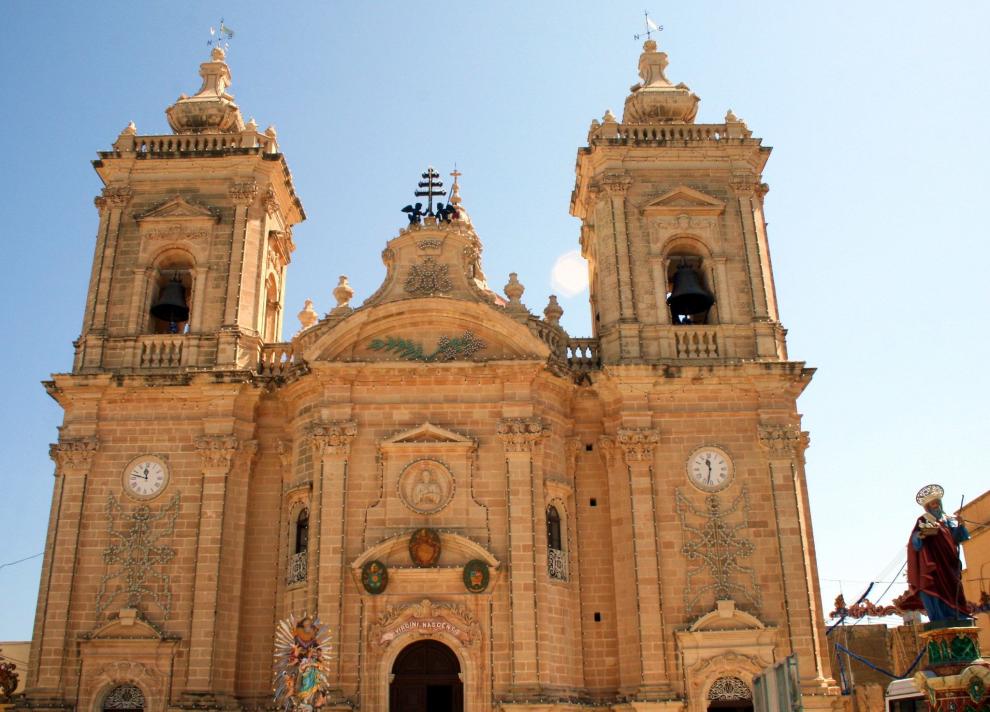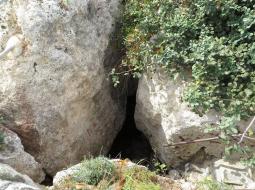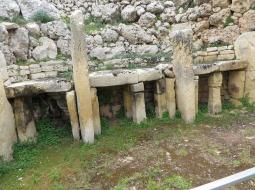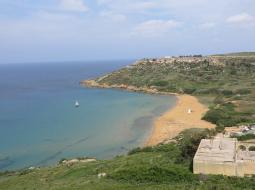Thessaloniki gets ready for its metro launch in November
The underground rapid transit lines have been under construction for almost two decades due to various project delays
 TheMayor.EU logo
TheMayor.EU logo 
Ix-Xagħra (pronounced: shara) was one of the earliest-inhabited areas of Gozo. In early modern documents, the plateau is referred to as Ix-Xagħret il-Għazzenin.
In modern times, the people first settled on the hill's highest point, tal-Qaċċa. This was Italianized to Il-Caccia, the name by which ix-Xaghra is referred to in most written documents prior to the Second World War.
This oldest part of the village is now referred to as ta' Sant'Anton, after the dedication of a late Medieval chapel to Saint Antony the Abbot. In the spoken language, the place was commonly referred to as ix-Xagħra, meaning a rocky plateau covered with patches of red soil.
The name is derived from the second part or central area of the hill known as Ix-Xagħret il-Għazzenin, the herdsmen's, literally lazymen's plateau. Eventually the name Ix-Xagħra prevailed.
A third part of the village that developed on the eastern part of the hill became known as ta' Gajdoru. It is believed that the name is derived from a chapel of the blessed Virgin Mary of Joys, Latin Gaudiorum, that once stood in that area.
This section is today referred to as tan-Nazzarenu, after the dedication of still another chapel that was built in the area early in the twentieth century.
The name of ix-Xagħra is first recorded as thax ahara in the acts of Notary Joannes Bondin (Notarial Archives, N A V, R 69) on 17 February 1518.
Source: Xagħra Local Council
Ix-Xagra is a Maltese locality with a population of 4301 inhabitants (2019, NSO-Malta) and an area of 7,6 square kilometres. It is located on a hill to the central north-east of the island of Gozo, Malta’s sister island. It is less than four kilometres away from the Island’s capital Rabat.
The local economy is mostly reliant on tourism and the hospitality industry.

Calypso Cave, overlooking the sandy bay of Ramla, is the legendary quarters of the nymph Calypso. According to the Odyssey, an ancient Greek poem attributed to Homer who flourished in the ninth century BC, when Ulysses was returning from Troy to Ithaca after the Trojan War, he was last stranded on Ogygia, the island of Calypso, after shipwrecking.
Ogygia is identified with Gozo. From the vantage point of the cave, one can enjoy a beautiful view of Ramla Bay.

The most famous prehistoric site of the Maltese Archipelago is the Ġgantija Temples of Ix-Xagħra, dating from around 3600 BC. It was the first of the Maltese prehistoric monuments to be cleared of earth and debris.
It consists of two temples: Southern and Northern one. A Guinness Book of Records entry confirms them as "the oldest free-standing structures in the world".

The locality is often referred to as the village of the goddess and the Madonna. It is the village with the highest concentration of prehistoric remains, monuments and beauty spots on the Island.
The village is encircled by the beautiful bays of Ir-Ramla, Għajn Barrani and Marsalforn, and the valleys of ir-Ramla, Ta' l-Għejjun and Marsalforn.